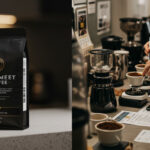
Does Traditional Coffee Include Instant Coffee? Exploring the Brew
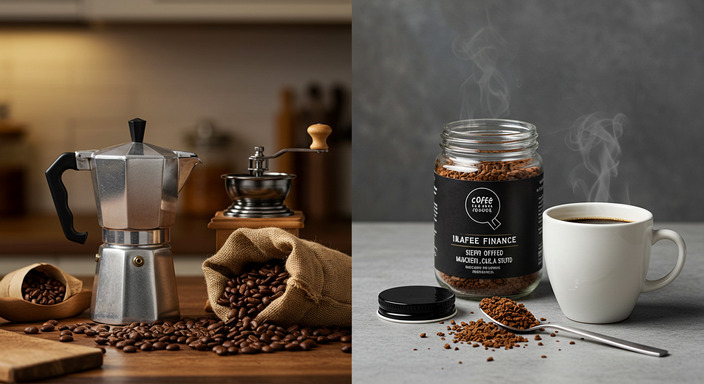
Table of Contents
ToggleThe Essence of Traditional Coffee
Defining Traditional Coffee and Its Cultural Roots
Traditional coffee is more than just a beverage; it is a timeless ritual that has woven itself into the fabric of cultures worldwide. Rooted in centuries-old practices, it represents the art of transforming simple coffee beans into a drink that fuels conversations, fosters connections, and marks the rhythm of daily life. From the bustling coffeehouses of 17th-century Europe to the diners of mid-century America, traditional coffee has been a constant companion, offering comfort and warmth in every sip.
The Art of Brewing Methods
Traditional coffee is celebrated for its diverse brewing methods, each with its own charm and character. Here are a few classic techniques that have stood the test of time:
- Drip Coffee: A staple in American households, drip coffee is brewed by slowly filtering hot water through ground coffee beans, resulting in a smooth and familiar flavor.
- French Press: This method immerses coarsely ground coffee in hot water, allowing the oils and flavors to fully develop, creating a rich and robust cup.
- Espresso: Originating in Italy, espresso is a concentrated shot of coffee brewed under high pressure, delivering a bold and intense experience.
Each method reflects a unique approach to extracting the essence of coffee, showcasing the versatility of this beloved drink.
The Sensory Experience of Freshly Brewed Coffee
There is something undeniably magical about the sensory journey of traditional coffee. The aroma of freshly ground beans, the sound of water percolating, and the sight of steam rising from a freshly poured cup all contribute to a moment of pure indulgence. The first sip, with its complex layers of flavor, awakens the senses and provides a comforting pause in the day. Whether enjoyed alone or shared with others, traditional coffee is a celebration of life’s simple pleasures.
What Is Instant Coffee?
The Process of Making Instant Coffee
Instant coffee, often seen as a modern marvel, is born from a process that transforms brewed coffee into a soluble powder or granules. It begins with brewing concentrated coffee using traditional methods. This liquid is then dehydrated through one of two processes: spray-drying or freeze-drying. Spray-drying involves spraying the coffee into hot air, evaporating the water and leaving behind fine particles. Freeze-drying, on the other hand, freezes the coffee concentrate and then removes the ice through sublimation, preserving more of the coffee’s original flavor. The result is a product that dissolves instantly in water, offering a quick caffeine fix without the need for brewing.
The Convenience and Modern-Day Appeal
In today’s fast-paced world, instant coffee has become a go-to solution for those seeking speed and simplicity. Its appeal lies in its convenience—just add hot water, and within seconds, you have a cup of coffee. It’s lightweight, portable, and doesn’t require any special equipment, making it a favorite for travelers, campers, and busy individuals. For many, it’s the ultimate lifesaver during rushed mornings or when a coffee maker isn’t within reach. Its long shelf life also makes it a practical pantry staple, always ready to deliver a comforting sip of coffee whenever needed.
Comparing Flavor to Traditional Coffee
While instant coffee offers unmatched convenience, its flavor profile often falls short of traditional brewed coffee. The dehydration process can strip away some of the nuanced aromas and rich complexities that define a freshly brewed cup. However, advancements in freeze-drying technology have narrowed this gap, producing instant coffees that come closer to mimicking the depth of traditional brews. Still, for those who cherish the ritual of grinding beans, brewing, and savoring each sip, instant coffee can feel like a sacrifice of flavor for efficiency. Yet, in moments when time is scarce, its straightforward charm can be surprisingly satisfying.
Does Traditional Coffee Include Instant Coffee?
Understanding the Distinction
Traditional coffee and instant coffee are often seen as two sides of the same bean, but they serve different purposes in the world of coffee lovers. Traditional coffee involves the meticulous process of brewing freshly ground beans, whether through a drip machine, French press, or espresso maker. It’s a ritual that celebrates the art of coffee-making, from the aroma of freshly ground beans to the carefully measured brewing time. On the other hand, instant coffee is made from brewed coffee that has been freeze-dried or spray-dried into granules, ready to dissolve in hot water. While it’s quick and convenient, it lacks the depth and complexity of traditional brewing methods.
Addressing Common Misconceptions
One of the most persistent myths is that instant coffee is just “watered-down” traditional coffee. While it’s true that instant coffee often has a milder flavor profile, many high-quality brands have worked to close the gap, offering products with rich and robust tastes. Another misconception is that traditional coffee is always superior. While it often is, the convenience and accessibility of instant coffee make it a practical choice for many, especially in moments when time is scarce. Both have their place, and neither should be dismissed outright.
Coexisting in Coffee Culture
In the diverse landscape of coffee culture, traditional and instant coffee coexist harmoniously. For many, the morning ritual of brewing a pot of drip coffee is a cherished routine, a moment of calm before the day begins. Yet, instant coffee has its own niche—whether it’s a quick cup at the office, a camping trip where brewing is impractical, or a nostalgic nod to simpler times. Both forms of coffee have shaped how we experience this beloved beverage, reflecting our lifestyles, needs, and preferences. Together, they weave a rich tapestry that honors coffee’s enduring legacy.
The Role of Coffee in Daily Life
Morning Rituals: A Warm Start to the Day
There’s something undeniably comforting about the first sip of coffee in the morning. For many, it’s not just a beverage—it’s a ritual that sets the tone for the day. The sound of the kettle whistling, the aroma of freshly ground beans, and the gentle steam rising from a mug evoke a sense of calm and anticipation. Whether it’s a quiet moment alone or a shared breakfast with loved ones, coffee has the power to transform the ordinary into something special. For generations, this simple act has been a cornerstone of daily life, a small yet meaningful tradition that connects us to our past and grounds us in the present.
Coffee and Connection: The Heart of Social Gatherings
Coffee has long been a catalyst for conversation and connection. From casual catch-ups at the local diner to elaborate coffee ceremonies in different cultures, it brings people together in a way few other things can. Think of the countless stories shared over a cup of coffee—the laughter, the tears, the moments of inspiration. In many American households, offering a cup of coffee is a gesture of hospitality, a way to make guests feel welcomed and valued. It’s no wonder that coffee shops have become modern-day gathering spaces, where friends meet, ideas are exchanged, and communities are built.
Comfort and Routine: Coffee as a Constant
In a world that’s constantly changing, coffee remains a steadfast companion. It’s there during late-night study sessions, early morning commutes, and lazy Sunday afternoons. Its familiarity provides a sense of stability, a comforting constant in the ebb and flow of life. For many, coffee is more than just a drink—it’s a source of emotional comfort, a reminder of home, and a way to pause and savor the moment. Whether it’s the first cup of the day or an evening espresso, coffee has a unique ability to ground us, offering both energy and solace in equal measure.
“Coffee is the common man’s gold, and like gold, it brings to every person the feeling of luxury and nobility.” – Sheik Abd-al-Kadir
Choosing Between Traditional and Instant Coffee
Factors to Consider: Taste, Time, and Occasion
When deciding between traditional and instant coffee, the choice often boils down to three key factors: taste, time, and occasion. Traditional coffee, with its slow brewing process and rich aromas, offers a depth of flavor that many enthusiasts swear by. Whether it’s a French press, pour-over, or a classic drip machine, the ritual of making coffee itself can be a cherished part of the day. On the other hand, instant coffee shines when time is of the essence. It’s a quick, no-fuss option for those busy mornings or when you’re on the go. The occasion also plays a role—while traditional coffee might be reserved for quiet weekend mornings or social gatherings, instant coffee is a reliable companion for workdays or travel.
Tips for Enjoying Both Types Authentically
To truly appreciate both traditional and instant coffee, consider these tips:
- For traditional coffee, invest in quality beans and experiment with different brewing methods to find your favorite. The process itself can be meditative and satisfying.
- For instant coffee, choose a reputable brand that aligns with your taste preferences. Adding a splash of milk, a pinch of cinnamon, or a drizzle of honey can elevate the experience.
- Pair your coffee with the right moment—traditional coffee for slowing down and savoring, and instant coffee for those quick pick-me-ups.
Personal Anecdotes from Coffee Enthusiasts
Many coffee lovers have fond memories tied to their preferred brew.
“Every Sunday, my grandmother would make a pot of strong, black coffee on the stove. The smell would fill the house, and we’d gather around the table, talking and sipping. It was more than coffee—it was tradition,”
recalls Sarah, a coffee enthusiast from Texas. Meanwhile, Jake, a college student, shares,
“Instant coffee got me through my all-nighters. It’s not fancy, but it’s always there when I need it. Plus, I’ve learned to make it just the way I like it—strong and sweet.”
These stories highlight how both types of coffee hold a special place in our lives, each serving a unique purpose.
The Timeless Appeal of Traditional Coffee
Celebrating the Rituals Behind Brewing
There’s something undeniably magical about the rituals of brewing traditional coffee. From the gentle grind of fresh beans to the aromatic steam rising from a freshly brewed pot, every step is a testament to craftsmanship and care. Whether it’s the slow pour-over method or the comforting drip of a classic coffee maker, these practices connect us to a tradition that spans centuries. It’s not just about the coffee—it’s about the moment, the pause in our day to savor something handmade and heartfelt.
Enduring Popularity Across Generations
Traditional coffee has a way of transcending time, appealing to both young and old alike. For some, it’s the strong, bold flavor of a morning cup that kickstarts the day. For others, it’s the nostalgic comfort of diner-style coffee shared with loved ones. Its versatility and simplicity have made it a staple in households, workplaces, and communities around the world. Across generations, it’s a shared experience that bridges gaps and creates connections.
Appreciating the Simple Pleasures
In a fast-paced world, traditional coffee reminds us to slow down and appreciate the simple pleasures. It’s not about fancy gadgets or intricate latte art—it’s about the joy of a well-brewed cup that warms the soul. Whether enjoyed alone in quiet reflection or shared in lively conversation, it’s a humble yet profound part of daily life. Let’s take a moment to honor this timeless tradition and the comfort it brings to our lives.
FAQ
Q: Why is traditional coffee still popular today?
A: Its simplicity, versatility, and deep cultural roots make it a beloved choice for people of all ages.
Q: What makes traditional brewing methods special?
A: They emphasize craftsmanship and mindfulness, turning the act of brewing into a meaningful ritual.
Q: How can I appreciate traditional coffee more?
A: Take time to savor each cup, explore different brewing methods, and share it with others to create lasting memories.
is a writer and editor at Coffee With Finance, blending her love for coffee, personal finance, and visual storytelling. She crafts engaging articles, curates site images, and shares brewing tips, bean origins, and practical money advice. Anna believes that managing finances, like making great coffee, should be intentional and rewarding — bringing clarity, warmth, and beauty to every story she tells.













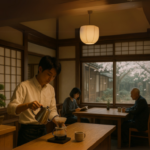




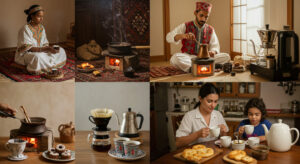



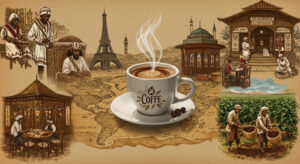




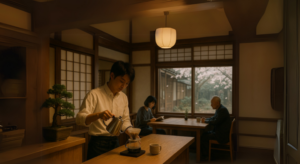
Post Comment